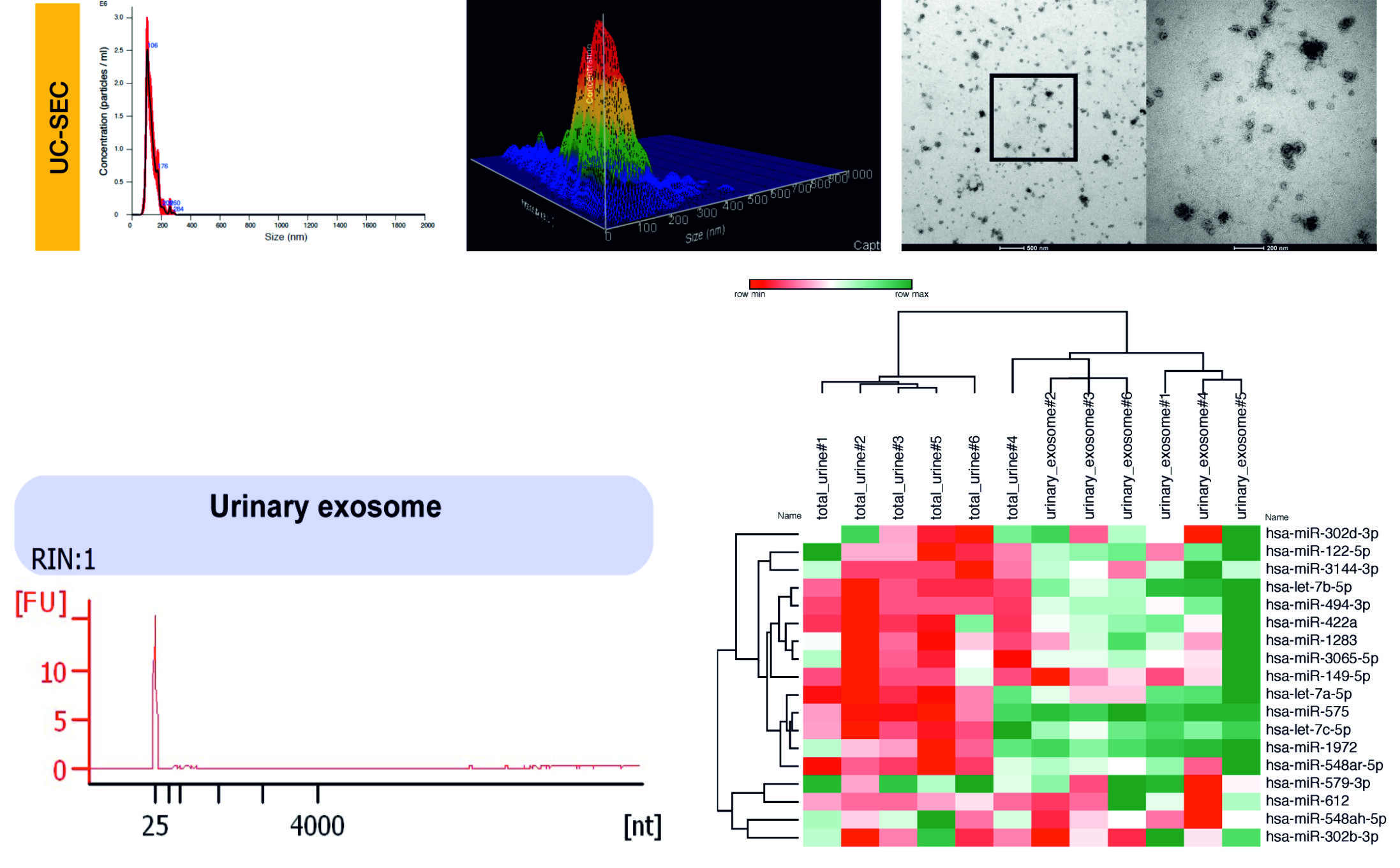Urinary exosome characterization and miRNA profiling in LUT dysfunction
Bladder outlet obstruction is characterized by an increased outlet resistance leading to an elevated detrusor pressure and decreased urinary flow during voiding. Urodynamic examination remains the gold standard procedure for the diagnosis of obstruction-induced LUTD, but it is an invasive procedure, associated with risks of haematuria and urinary tract infection. Therefore, effort is being made to find non-invasive parameters for the diagnosis of BOO and other LUTD. Urine is easy to collect, making it an attractive source of potential biomarkers. It contains small molecule metabolites and a considerable number of proteins and nucleic acids, both free and packaged in urinary extracellular vesicles (uEVs). This project examines the potential of urine, a good source of circulating miRNAs, which can be used as disease biomarkers. Urinary miRNA assessment is non-invasive, and offers advantages over urodynamics and other methods, requiring special skills and trained personnel. In order to facilitate the assessment of the bladder function, relevant for diagnostic of LUTS and obstruction, we developed an optimized ultracentrifugation and size exclusion chromatography approach for highly reproducible isolation for 50-150 nm urinary vesicles, corresponding to the exosomes, from urine. We are investigating the urinary miRNA signatures able to discriminate between controls and the patients with BLUTD and NLUTD. The panel of representative miRNAs is further explored to develop a non-invasive diagnostic test for bladder outlet obstruction and neurogenic bladder dysfunction.
